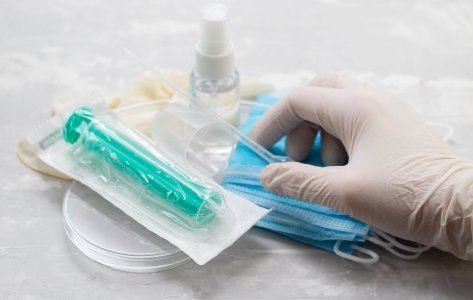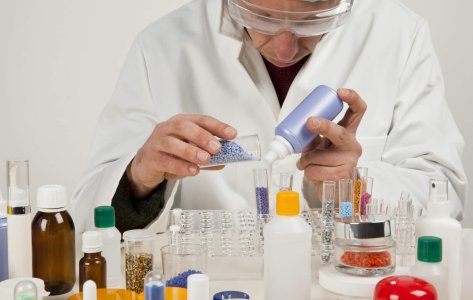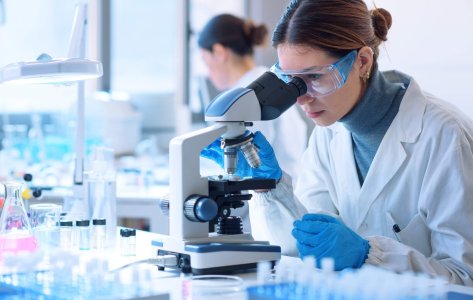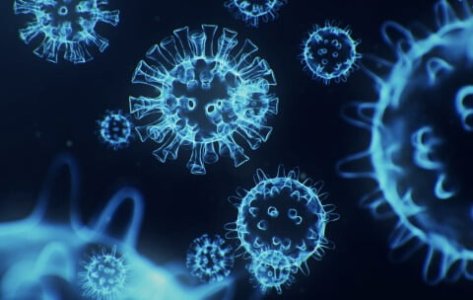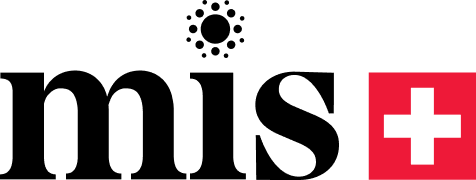- Swiss testing laboratory
ASTM D7855: 2013

Hassle-free testing experience
Need to get a product tested? No worries! To and fro logistics are on us; we collect your products, test them and, deliver them back to you.
Related tests for you
Quick understanding of the test
ASTM D7855: 2013 - Standard test method for determination of mold growth on coated building products designed for interior applications
- Aspergillus niger (ATCC 16888)
- Penicillium citrinum
The test involves exposing coated interior building products to target test microorganisms in an environmental chamber through indirect inoculation.
Samples are incubated for 4 weeks. After incubation, specimens are inspected for visible mold growth.
- Validates mold resistance and enhances product credibility.
- Ensures regulatory compliance and supports product claims.
Turnaround Time
Passing criteria
Do you have a product that needs testing?
Abstract
ASTM D7855 provides a standard test method for evaluating the resistance properties of coated building materials against mold growth. The standard is particularly applicable for interior coatings. The test ensures that antifungal-coated building materials used in high-humidity areas or damp conditions can withstand mold growth which could otherwise cause structural and aesthetic damage to properties.
Test Organisms Used
At MIS, we use Aspergillus niger and Penicillium citrinum to assess the resistance of interior coatings toward mold growth.
Test Method
- Aspergillus niger and Penicillium citrinum are used to assess the resistance of interior coatings toward mold growth.
- Test samples are challenged with test microorganisms in an environmental chamber through indirect inoculation. Indirect inoculation involves providing fungal inoculum using open Petri dishes containing seven-day-old fungal cultures placed below the test product.
- Inoculated test specimens are placed in an environmental chamber equilibrated at 30 ± 2°C with a relative humidity exceeding 90% for 4 weeks.
- During the incubation period, a proper supply of fungal suspension is provided within the chamber to ensure mold growth.
- After incubation, specimens are examined for fungal growth through macroscopic inspection using indirect lighting.
Scope and applications of ASTM D7855 test
The test is applicable to coated interior building products such as
- drywall,
- wood panels,
- ceiling tiles,
- insulation materials and coatings, etc.
However, the standard is not intended to evaluate surfaces designed for exterior applications or uncoated surfaces.
Importance of ASTM D7855 Test
Fungal or mold growth on interior surfaces is a common problem that causes both structural and aesthetic damage to properties over time. This can cause dissatisfaction among users and also lead to significant economic losses. Thus the need for antifungal coated building products has increased over the recent years.
ASTM D 7855 serves as a key factor in ensuring both regulatory compliance and durability of products by providing a standard approach for testing the resistance of these products against mold growth.
Benefits of performing this test
- Opting for this test provides a third-party validation of the resistance of the product to mold growth. This validation helps enhance the credibility and reliability of the product in the market.
- Test results can be used to obtain certification claiming resistance against mold growth.
- Testing helps manufacturers ensure products comply with industry standards and regulatory requirements.
- Test results can be used in technical documentation to validate claims about mold resistance.
Conclusion
The standard methodology provided by ASTM is essential for evaluating the mold resistance of coated building products by simulating practical conditions. This provides manufacturers with reliable data that can be utilized to improve product quality, ensure regulatory compliance and meet consumer expectations.
At MIS, we offer both standardized and customized ASTM D7855 testing services that meet the needs of our clients. Our team of experts is dedicated to delivering quality services with accuracy, precision and reliability. Besides ASTM D 7855, we also perform ASTM G21 test and other similar antifungal tests for plastic materials.
Contact us to receive a quote on ASTM D 7855 or to schedule an appointment with our experts.
Frequently Asked Questions

DR. Martinoz Scholtz
ASTM D7855 is a standard test method for the determination of mold growth on coated building products designed for interior applications.
ASTM D7855 test applies to interior coatings for buildings such as drywall, wood panels, ceiling tiles, insulation materials, coatings, and other construction materials that may be prone to mold growth.
It takes 5-6 weeks to complete this test.
At Microbe Investigations Switzerland, we perform the test using Aspergillus niger (ATCC 16888). Penicillium citrinum. Additional strains can be added as per the customer’s request.
The test determines mold growth by exposing test samples to controlled environmental conditions conducive to mold growth and assessing the extent of growth according to predefined criteria.
The environmental chamber simulates conditions of high humidity levels (90-95% relative humidity) and elevated temperatures (around 30-35°C or 86-95°F) required for mold growth.
Test samples are prepared by cleaning and conditioning them to remove any contaminants. They are then inoculated with a suspension of fungal spores and placed in the environmental chamber.
The criteria for evaluating mold growth include visual inspection and scoring based on the extent of mold coverage. Mold growth is rated on a scale from 0 to 4, with 0 indicating no growth and 4 indicating extensive growth.
The test supports regulatory compliance and product claims by providing standardized, reliable data on a material’s resistance to mold growth. Manufacturers can use the test results to validate their claims about mold resistance.
Certifying building products using this standard offers improved marketability, enhanced credibility, and product quality assurance.
Regular testing is recommended, especially when any significant changes occur during product development, to ensure continued compliance and effectiveness in mold resistance.
Meet the best of the blend of
R&D, Efficacy Testing,
Innovation and Passionate
Experts at MIS.





Explore More
Modern industry is based on
With the increasing awareness on
Interior coatings and plastics which
The ISO 21702 evaluates the
